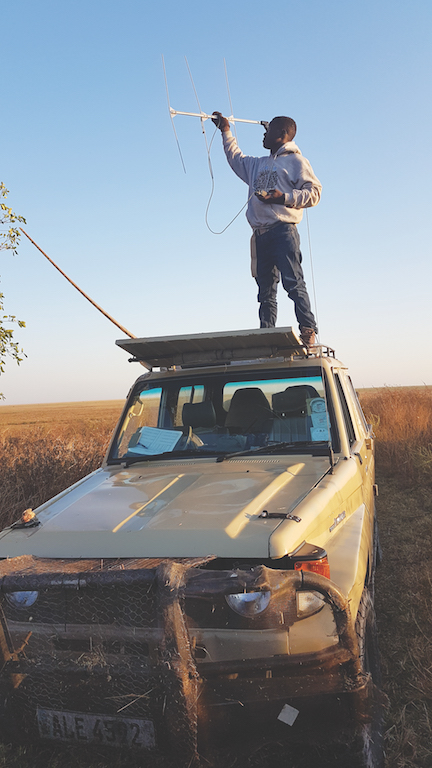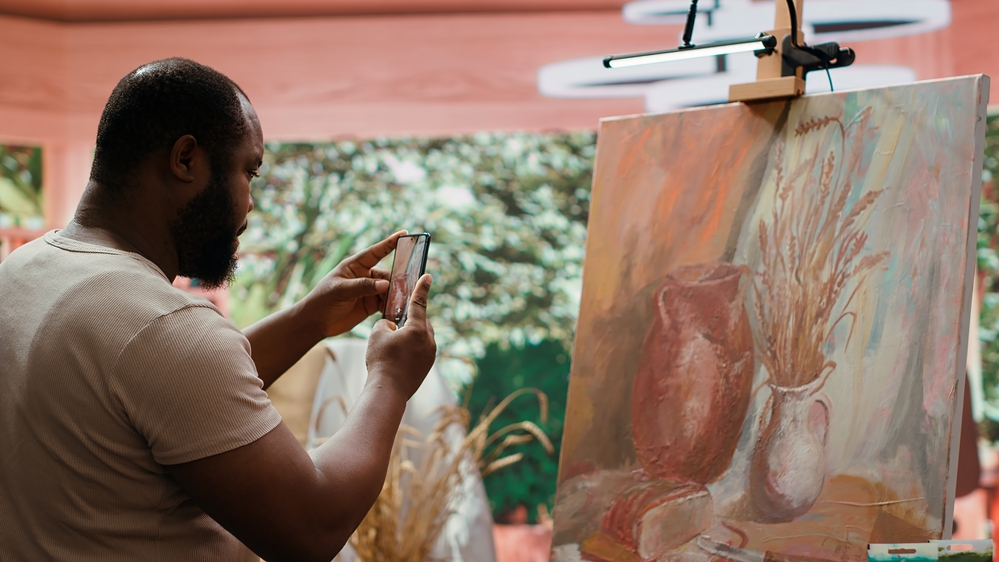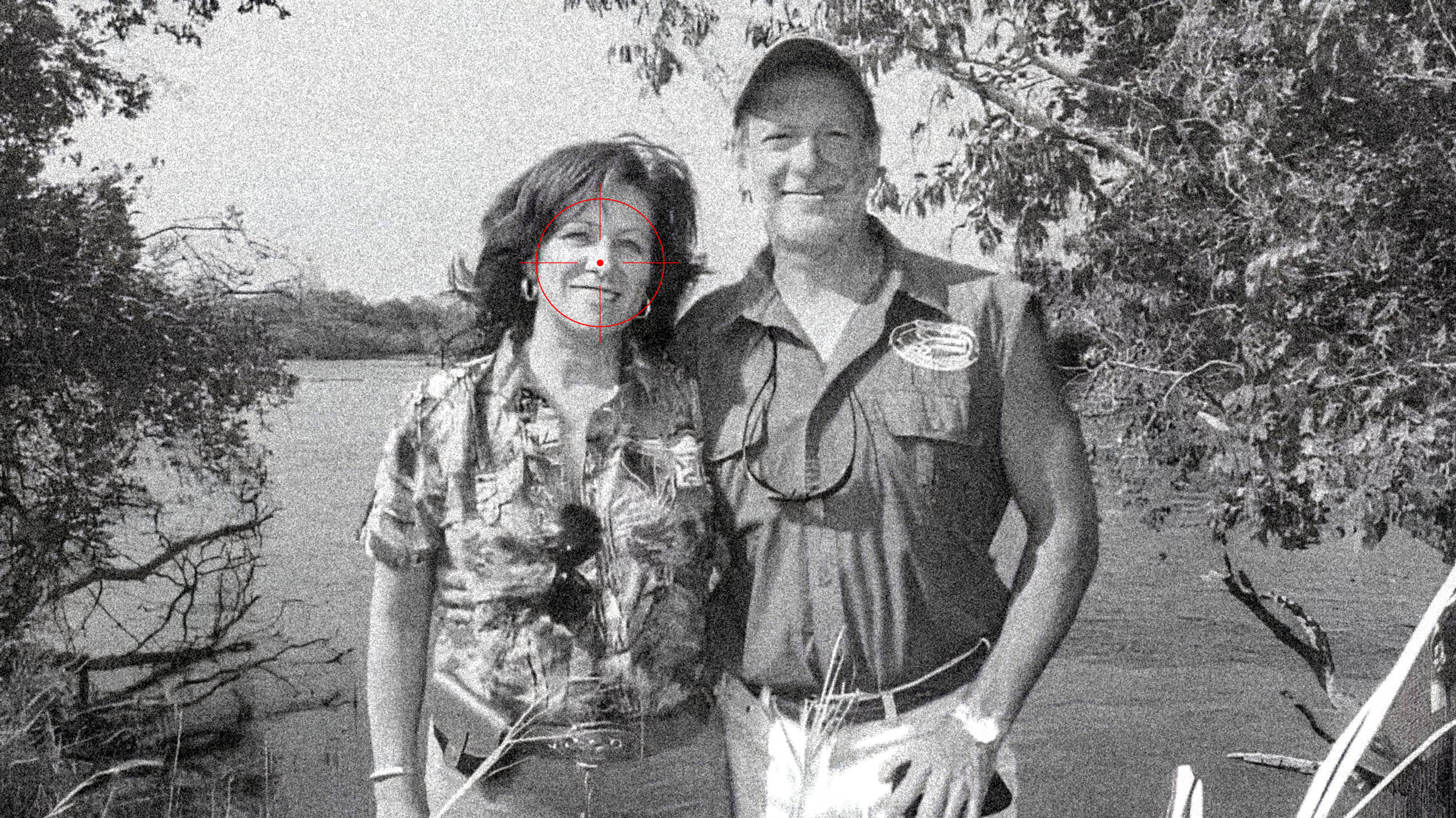As we scanned the landscape of Liuwa Plain in the Western Province, noting the wildebeest grazing, some zebra dust bathing and a variety of birds in our view, we spotted something dark on the horizon that was moving towards us. Definitely not a wild animal. It was a motorbike so one of the researchers from Zambian Carnivore Program, (ZCP) returning to the research camp after data collection at the hyena den. Soon we were chatting to Kings Chimungu as he sat astride his motorbike wrapped up warmly against the cold morning air.
Kings is a very affable young man who oozes enthusiasm for his subject – wildlife and conservation. He soon told us he was from Mfuwe of the South Luangwa in the Eastern Province, also our home for three decades and so I asked how he had ended up in the Liuwa researching hyena. Kings had attended Mfuwe Day School where he had been a keen member of the Conservation Club run by Chipembele Wildlife Education Trust. He was lucky to be selected to partake in the Chipembele A to Z Exchange and visited Australia on a conservation student exchange programme with a school in Adelaide. His ambition was to be a veterinarian and he spent three months shadowing Mwamba Sichande, the joint veterinarian of Conservation South Luangwa (CSL) and ZCP. He then spent a year as a field research assistant with ZCP in Liuwa, collecting data on the carnivores and is now studying to be a wildlife veterinarian nurse in Lusaka, assisted with sponsorship by Creating for Conservation in Australia. It turns out he was on a term break and where did he choose to spend his holidays? Working in the field, researching carnivores in the remote Liuwa.
Pupils in the Mfuwe Day School library
This story warmed my heart on that cold morning. It reflects the impact, on an individual, from a number of organizations that work toward contributing to both conservation and the community in a wildlife area. Mfuwe Day School, a near million dollar secondary school of 1000 students, was built with money donated by tourists staying at safaris lodges in the South Luangwa National Park (notably The Bushcamp Company and Flatdogs). The funds were channeled through Project Luangwa, an organisation directly sustained by safari lodges that “ensures the people of the Luangwa Valley gain the full benefit of tourism by investing in education”. The total number of pupils being sponsored for education by the various NGOs and lodges in the area is 552 this year. The Chipembele is a conservation program that says “Our comprehensive and inspiring conservation education programmes create a new meaning and value to wildlife and the environment for local children and young people.” Supported in part by tourism, 630 students in 17 schools are members of the club at any one time. This excellent organization has given young minds the opportunity to learn about wildlife and conservation. Conservation South Luangwa was established and continues to be supported by the tourism sector. Zambian Carnivore Program, a research organisation, also works closely with and is supported in kind by the tourism sector.
The Chipembele, CSL and ZCP partnership offers young people, who want to enter the field of conservation or wildlife related matters, the opportunity to go into assistant field work and then potentially into supported academic places in both Zambia and overseas. Kings is the fifth student that ZCP has facilitated in some way into bachelor or master degree courses.
Wildlife areas attract tourism companies, conservation and wildlife research organisations. These organisations offer long term sustainable job opportunities, create economy in the local communities and develop community projects, usually in education. Whether these projects are in response to international expectations of ecotourism or because the business owners simply have a desire to contribute, it does not matter. The safari lodges across the country contribute some millions of dollars a year to such community projects and many thousands of individual children are impacted to a lesser or greater degree.
So, I asked myself, why is it that the tourism and wildlife sector is continuously being asked, “what do you do for the community?” As someone who has been involved with tourism funded community projects for nearly thirty years, I find it interesting that this question is asked at all. To us, the tourism sector, it is always a surprise. Take Project Luangwa. In the six years of operation, working in five Chiefdoms in Mambwe District, the contribution has been, in summary: 39 buildings in schools ranging from 1 x 4 classroom blocks, teachers houses, libraries, dormitories, toilets blocks etc; 284 desks, 2000 text/reader books, 27,000 library books, 60 Zedupads, 350 secondary school sponsorships, 32 tertiary sponsorships, 16 wheelchairs, 16,535 menstrual hygiene pads distributed. And more. Yet, recently and again, the question has been “what do you do for the community?”
As I listen to Kings communicate his story, I realise the answer.
The tourism companies and wildlife/conservation organizations contribute enormously to both the community at large (e.g. building schools) and to individuals specifically (illustrated by Kings’ story) but what we do not do well is communicate our intentions, our plans and our achievements to both the community and the government in a consistent manner. The tourism industry is excellent at PR and Marketing to achieve awareness of their product in the international market. The wildlife/conservation NGOs raise international funding through good communication and proposal writing. Yet these are the exact skills that are needed to communicate the impact of the sector’s contribution to the local communities and in the wider Zambian economy. So I now ask the question “why is this contribution not being communicated effectively in Zambia?” I believe it needs to be heard








